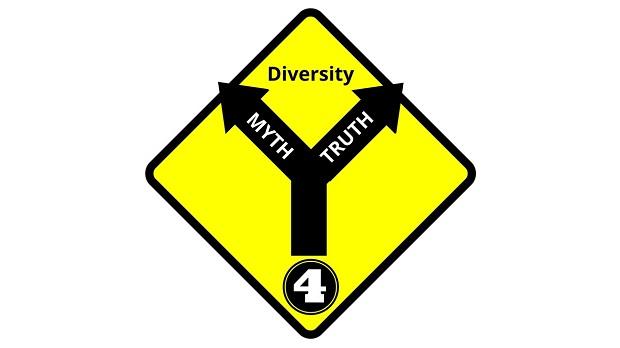I have noticed that many DEI conversations have been centered around helping white people understand the humanity of people of color — highlighting their contributions to society and exposing white people to the idea that complicity has been all too common in blatant and systematic racism. With recent shifts in technology and resources, I would suggest that many people have enough access to the internet to learn about anything, including racism. Before the turn of the millennium, lack of knowledge in this area could have been attributed to ignorance and/or lack of proximity. Today, it can be attributed to its core problem: fear.
Whether the fear is of getting a term wrong, offending someone, being forgotten, or having to slow down long enough to understand and treat others with the respect they would want, fear alone is no longer an acceptable excuse. Evidence of a humble, learner’s heart is the foundational solution. As time goes on, it’s becoming apparent that many in my generation feel unwilling to invest emotional, mental and spiritual energy into those who will not invest in their own learning about race and other differences. The world is changing, and what one person may feel willing to put up with, another may not.
As time goes on, it’s becoming apparent that many in my generation feel unwilling to invest emotional, mental and spiritual energy into those who will not invest in their own learning about race and other differences. Click To TweetOn the heels of new legislation during and following the 1960s Civil Rights Movement, the rights of various historically marginalized groups began to be covered legally. Progress was contingent on steadfastness of activists and advocates to remain committed to the work inside the community, at the workplace and anywhere else that needed a voice. However, due to both outright and hidden resistance to DEI work, practitioners have often been forced to choose one lane to focus on at a time (think race, gender or ability status in isolation).
Some would argue that new identities are “coming out of nowhere.” This is not the case: most of these identities have always been a part of the human experience, but being our authentic self requires risk, and people have not always had the same access to information, support and community that they do now.
Some say new identities are 'coming out of nowhere.' Most have always been part of the human experience, but being our authentic self requires risk, and we haven't had the same access to info, support and community as now. Click To TweetAs the DEI field and society continue to evolve, it is time we fully embrace and begin to apply an intersectional lens.
What is Intersectionality?
Intersectionality was coined in 1989 by scholar, activist and legal expert, Dr. Kimberle Crenshaw to address the perpetual exclusion of Black women in law, feminist, anti-racist discourse theory and remedy. Intersectionality calls out that there are multiple forms of privilege and oppression based on race, gender, class, sexuality, age, ability, religion, citizenship or immigration status, and so on. Intersectionality calls attention to how these social hierarchies are products of our social, cultural, political, economic and legal environment.
Intersectionality helps to dispel this notion that everyone is alike, thinks the same way, shares the same desires and more. It also breaks down the notion that challenges we face are equally distributed; in fact, our intersecting identities often shape webs of opportunity, or lack thereof, in such a way that people with multiple marginalized identities face more systemic barriers. Acceptance of intersectionality introduces more nuance to our interpretation of lived experiences.
What could this look like?
In order to paint a picture, we’ll take a look at what dynamics may play out between people engaged in the feminist movement: If a straight, able-bodied white woman involved in the feminist movement isn’t aware of the other privileges that she possesses in her life, she may make the mistake of trying to relate to other women — BIPOC, queer women, women with disabilities or any combination thereof — in a way that doesn’t translate. Though her life as a woman may be challenging, without the awareness of intersectionality, she may only judge hardships by what she can see through her own lens.
Being a woman in the context of sexism means encountering barriers that men do not usually encounter. Being a Black woman in the context of a sexist and racist society means encountering barriers related to both sexism and racism, and the ways they intersect. To add one more layer, what if this Black woman has a visible disability? How does that impact the way she navigates through life? How does that impact the way others see and treat her? And will her concerns, ideas and input be seen as legitimate by those who do not maneuver life the way she does? The nuances of how someone’s experiences of the world relate to their identities shouldn’t be reduced out of carelessness or fear.
The nuances of how someone’s experiences of the world relate to their identities shouldn’t be reduced out of carelessness or fear. Click To Tweet
“Invisible” Diversity
Another dynamic that must be factored into our understanding of intersectionality is when an element of someone’s identity isn’t ‘visible’ to the eye. For example, those who may be perceived as racially ambiguous, or have an invisible disability, intersectionality can feel complicated. They are aware of the categories they fit in — even if no one else can see or define these categories.
Those with less visible identities may choose to “cover” in order to divert attention. In an effort to survive, they may hide the fullness of who they are and try to compensate for it. We must be intentional not to label or assume people’s identities, while at the same time providing space to evolve into new categories for those who wish to.
What does that mean for the future of DEI?
With time, intersectionality will become a more prominent lens. Conversations about what it means to have a diverse, equitable, inclusive and justice-centered company will not be talked about through one identity at a time but will get specific and intersectional — to help those who are most impacted by oppressive systems.
How does gender and racism play out for Black women, Asian women, and Latina women differently? What about those who are Indigenous to the United States? For each of these communities, and for those who belong to several: how does the narrative that they must ‘rise above’ in order to be successful show up differently for them?
By embracing intersectionality — the “diversity within diversity” — we will be able to fight the real problems that keep us from developing strong relationships, social intelligence and being empathetic to one another. Bringing an intersectional lens to our worlds will help us to appreciate our own journeys more fully, while also celebrating the individuality of each person we come across.
By embracing intersectionality - the 'diversity within diversity' - we will be able to fight the real problems that keep us from developing strong relationships, social intelligence, and being empathetic to one another. Click To Tweet


















